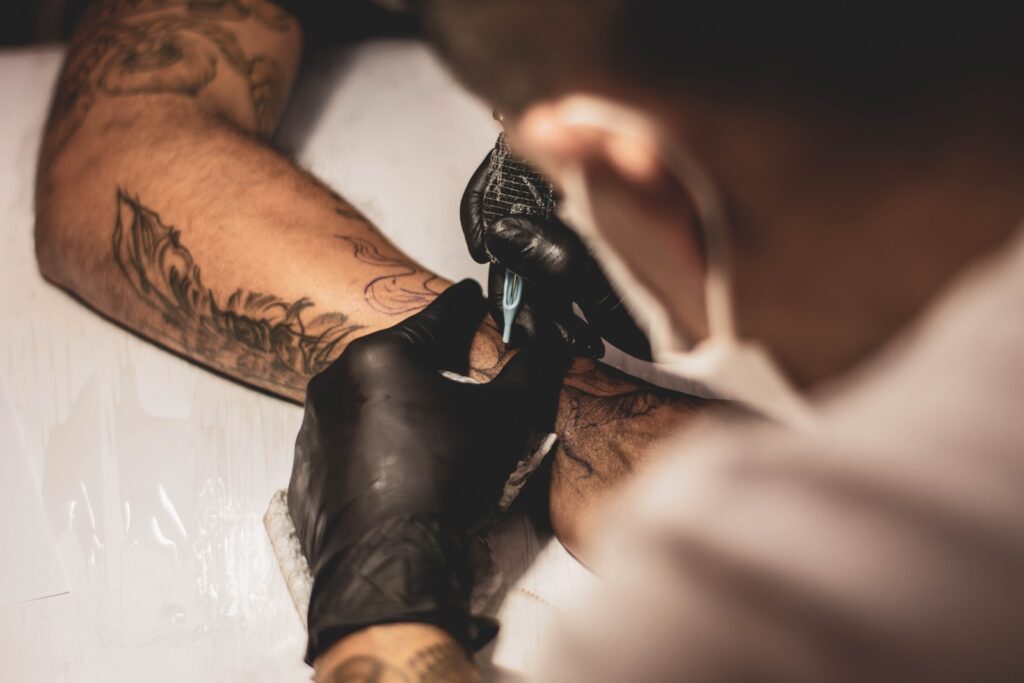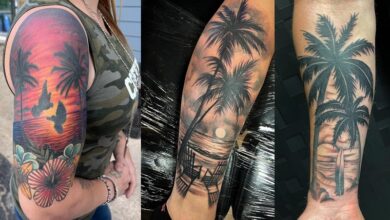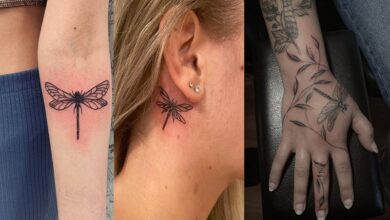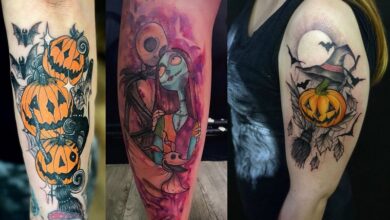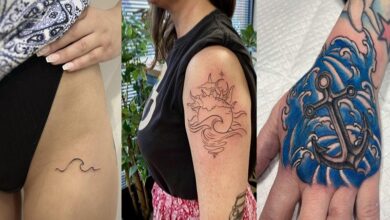What is a Tattoo?
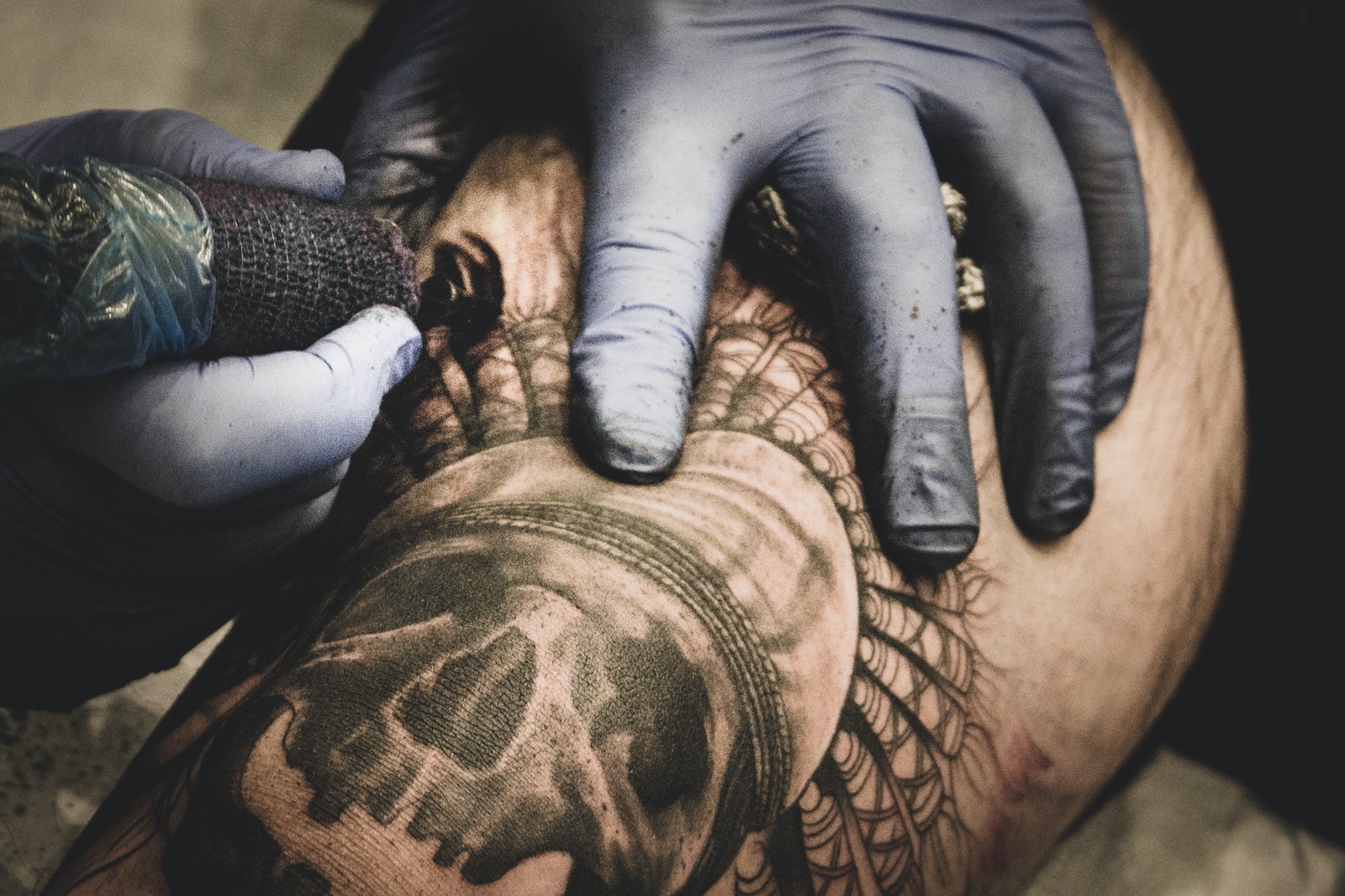
Table of Contents
What is a tattoo?
In the most basic terms, a tattoo is an image made by inserting ink into the skin.
In order to understand the process of tattooing, it’s necessary to first understand what is a tattoo. A tattoo is essentially a wound. The artist injects ink into your dermis (the middle layer of skin), which causes bleeding and bruising in the area.
Almost all tattoos are done by electric tattoo machines, which consist of several parts:
1. A foot pedal that controls the power
2. A grip, or tube, that holds the needle bar
3. A needle bar that holds the needles together in a group
4. A tube system consisting of a sterilized tube and disposable tip that holds the needle bar and connects it to the ink source (a disposable plastic bottle or an ink cap)
5. The needles!
What is a tattoo exactly?
A tattooist is an artist who creates tattoos and is also called a tattoo artist. A tattooist usually works out of a studio, but they may be mobile as well. Tattoos are created by injecting ink into the skin using a needle. The process of getting inked is called being tattooed.
Before getting a tattoo, people should choose a design and placement that will be meaningful in their lives. They should also find an experienced artist who follows proper hygiene practices and uses sterile equipment, including new needles for each customer.
Tattoos are one of the oldest forms of body modification and have been around since prehistoric times. The first recorded tattoo is found on the mummified remains of ancient Egyptian royalty who may have used it as a form of identification.
The word tattoo comes from the Tahitian word “tatu” which means “to mark.” The art of creating tattoos has been around for centuries and can be traced back to various cultures around the world.
The majority of modern tattoos are done using an electric tattoo machine, which uses a needle to repeatedly inject ink into the skin.
Why do they tattoo?
In the beginning tattoos were mostly used as part of rites of passage, stigmatization and religious practices. Tattoo has been used as a symbol of status, rank, religious beliefs and convictions.
Tattoos have also been used to show devotion to Gods, ancestors and spirits. In many cultures they are also used as camouflage by soldiers and sailors to intimidate enemies.
A tattoo is a mark made on the skin with pigment, usually for decorative purposes. The Inuit and other northern cultures traditionally made tattoos by cutting designs into the skin and rubbing the resulting wound with ink, ashes or other agents; these wounds were then left to heal.
Are tattoos painful?
The most painful areas to get tattooed are those with the least fat, most nerve endings, and thinnest skin. Bony areas usually are more painful. The feet, hands, ribs, hips, outer shoulder blades, and face are considered especially sensitive areas by most tattoo artists and clients.
The amount of pain you’ll experience while getting a tattoo varies from person to person. Some people don’t mind it at all, while others find it unbearable. Pain tolerance also varies depending on the area being tattooed; for instance, the bicep tends to be less painful than the ribs or inner elbow.
Are tattoos harmful?
The chemicals used in tattoo inks may be toxic, with some containing carcinogenic compounds. A European Chemicals Agency (ECHA) investigation found that “some tattoo inks contain carcinogenic aromatic amines outlawed for use in cosmetics.” The ECHA states that the chemicals can migrate into the body and cause long-term damage to DNA and other cells. The agency recommends that people should avoid “skin contact with unknown substances whose safety is not proven.”

